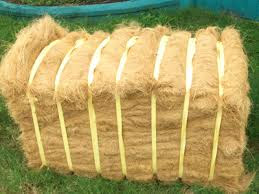Coir Fibre Manufacture
Coir fibre...
Coir or coconut fibre is a natural fibre removed from the husk take a coconut and used in products such as floor mats, doormats, brushes, and cushions. Coir is the fibrous solid found between the hard, internal shell and the outer coat of a coconut. Other uses of brown coir are in fabric packing, dismissal and agriculture. White coir, picked from unripe coconuts, is used for making better brushes, string, rope and fishing nets.
 | ||||||||||||||||||||||||||||||||||||||||||||||||||||||||||||||||||||||||||||||||||||||||||||||||||||||||||||||||||||||||||||||||||||||||||||||||||||||||||||||||||||||||||||||||||||||||||||||||||||||||||||||||||||||||||||||||||||||||||||||||||||||||||||||||||||||||||||||||||||||||||||||||||
| COIR FIBRE |
Green coconuts
picked after about six to 12 months on the honour, contain pliable white
fibres. Brown fibre is obtained by picking fully mature coconuts when the
healthful layer nearby the seed is ready to be processed into copra and dried
coconut. The fibrous layer of the fruit is then parted from the hard shell by
driving the fruit down onto a spike to split it. A well-seasoned husker can
manually separate 2,000 coconuts per day. Machines are now available which
crush the whole fruit to give the loose fibres. These machines can process up
to 2,000 coconuts per hour.
Buffering:
Types of Coir Fibre:
White Coir Fibre:
The young husks are
postponed in a river or water-filled pit for up to ten months. During this
time, micro-organisms break down the plant matters nearby the fibres to loosen
them a process known as retting. Sections of the husk are then compressed by
hand to single out the long fibres which are afterwards dry and washed. Cleaned
fibre is ready for turning into yarn using a simple one-handed system or a spinning
move.
 |
| White Fibre |
Brown Coir Fibre:
The mattress fibres are selected to remove dirt and other drivel, dried in the sun and packed into packages. Some mattress fibre is allowed to retain more damp so it retains its elasticity for twisted fibre production.
The coir fibre is elastic plenty to twist without breaking and it holds a curl as though forever waved.
Twisting is done by only making a rope of the coil of fibre and twisting it using a machine or by hand. The longer bristle fibre is splashed in clean water and then dried before being tied into bundles or hanks. It may then be cleaned and 'hackled' by steel combs to flatten the fibres and remove any smaller fibre pieces.
 | ||||||||
| Brown Fibre |
Red coir is used in floor mats and doormats, encounters, futons, floor tiles and dismissal. A small amount is also made into yarn. Cloths of curled brown coir fibre, made by pointer-felting are formed and cut to fill mattresses and for use in attrition control on river banks and hillsides.
A major proportion of brown coir pads are sprayed with elastic liquid which bonds the fibres together to be used as fabric padding for the automobile industry in Europe.
The main use of white coir is in twine manufacture. Mats of woven coir fibre are made from the better grades of bristle and white fibre using hand or powered looms. White coir also is used to make casting nets due to its robust fight to brine.
Coir is also used as a substrate to grow mushrooms. The coir is usually varied with vermiculite and treated with hot water.
After the coir/vermiculite mix has cooled to room fever, it is placed in a larger bottle, usually a plastic box. Previously prepared issue pots are then added, issue is usually grown in jars using substrates such as rye grains or bare bird stones.
This brood is the mushrooms mycelium and will settle the coir/vermiculite mix eventually maturing mushrooms